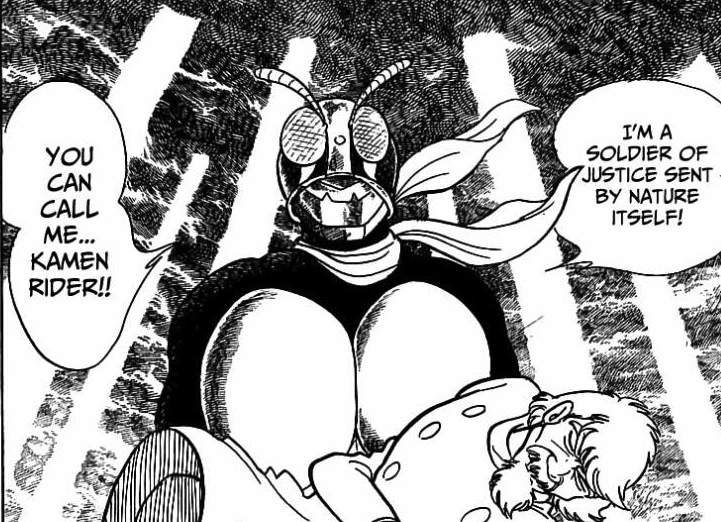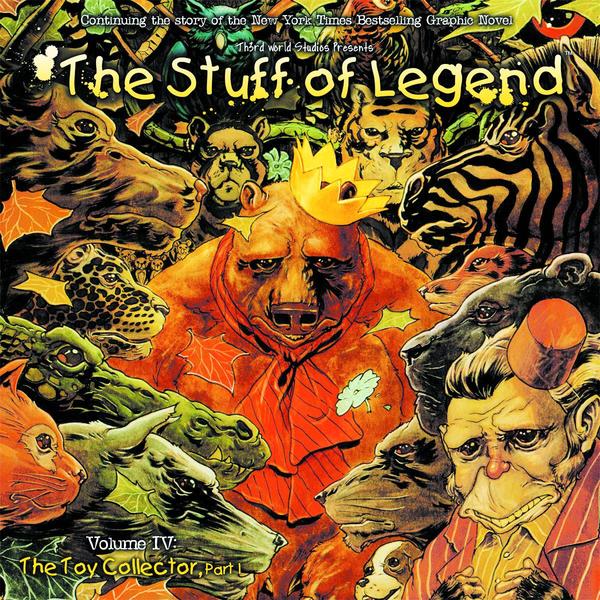From Friendly Ghosts To Gamma Rays, No.118: World ‘O Stuff!
Well hello and welcome back to our weekly all-ages column around these parts, From Friendly Ghosts To Gamma Rays! The big news this week wasn’t the terrible hurricane that struck the East Coast of the United States. Nope, it seems the biggest news is that Disney has bought Lucasfilm Limited! On top of that, they’ve announced another Star Wars film for 2015! That’s all well and good, but more importantly, where’s my announcement for my Willow sequel, damn it! Also you own both Marvel and Lucasfilm, so what about another at Howard The Duck guys!!!!!! So much wasted potential by jumping into another Star Wars. Sigh. Until then, let’s take a look at some rocking stuff that has come out lately!
——————————————————-
 Kamen Rider Vol.1
Kamen Rider Vol.1
Publisher: Ishimori Productions
Written and Drawn By: Shotaro Ishinomori
Available Exclusive On: comiXology
Three weeks back when comiXology announced they attained exclusive digital release rights for the entire catalog of Shotaro Ishinomori comics from Ishimori Productions (not a typo, Ishinomori later shortened his name to Ishimori), manga fans rejoiced as volumes of out-of-print Cyborg 009 became available again, the cult favorite Kikaida manga became available for the first time in English, and now this one: 1971’s Kamen Rider. Now some may remember Kamen Rider as a super-butchered version called Masked Rider that was presented in a sugar-vomit kid-friendly Power Rangers spin-off in the 1990s. I ask you to forget that hot mess, because the original Japanese Kamen Rider had just as big of an impact on Japanese culture as Godzilla or Ultraman, revolutionizing the industry in terms of storytelling in darker tones, yet being cool and exciting.
The 1971 manga came hot on the heels of a prototype one-shot manga called The Skullman by Ishinomori (also on comiXology). However, when Toei Co. wanted to develop it for television, The Skullman was way too dark, and so Ishinomori redeveloped the themes and concept into what is still a dark story of revenge, but with Kamen Rider we get a hero with morals, versus Skullman who was an anti-hero who’d kill anyone to get his revenge. Kamen Rider follows Takeshi Hongo, a scientist kidnapped by evil organization Shocker, who are turning folks into killer cyborgs to do their bidding. Hongo awakens, his whole body replaced except for his brain, and makes a narrow escape, then dedicates his life to taking down Shocker. The task is a lot harder than Hongo expected, with Shocker having ties in the government, science community, and so forth. Hongo changes into Kamen Rider to defeat an array of vicious cyborgs on his quest.
Kamen Rider provides us with a nice starting point to look at Ishinomori’s work. Ishinomori was an assistant to Astroboy creator Osamu Tezuka, and on his first work Cyborg 009 (which also made a huge impact on Japanese culture), art style wise that is evident. However, by the time he hit The Skullman and Kamen Rider, Ishinomori started coming into his own. Yes, there is a heavy Tezuka influence still there visually with this slight cartoon feeling, but by that time it started to have a look and feel of its own between designs, layouts, shading, etc. Story wise what may seem a little more “done” these days, Kamen Rider was fresh in 1971, the whole “created by evil to get revenge against evil” theme goes as far back as comics of the 1940s, but not rendered or told like this. Something about Ishinomori’s take was so different in 1971 it deserved the culture phenomena it created in Japan. The best part is that Kamen Rider still holds up today over 40 years after it was published; that speaks volumes for something that age in a market this size these days.
I can’t recommend Kamen Rider enough, if there is one thing from this column this week you read, it should be this title. Now that it’s finally blessed our shores with a digital release, I’d love a print version, too, but we have to start somewhere, and it’s a great point to hop on and enjoy! Available now digital only on comiXology.
————————————————–
 The Stuff of Legend Volume IV: The Toy Collector, Part 1
The Stuff of Legend Volume IV: The Toy Collector, Part 1
Publisher: Th3rd World Studios
Story By: Mike Raicht and Brain Smith
Illustrated By: Charles Paul Wilson III
Th3rd World Studios has once again given us a new story arc in the unfolding tale of The Stuff of Legend. Part 1 of “The Toy Collector” sets up our story, taking place in 1944 in the bedroom of Brooklyn, where a small group of toys fight an unseen war in the shadows against the Boogeyman. Monkeys, tigers, bears, puppets, all fight against their own self doubts to unite and defeat this common foe for the sake of the human they protect.
Now admittedly, that plot summary sounds very close to the back of the issue cover, which it is. Problem with The Stuff of Legend for this reviewer is that although it’s the first part of a new arc, it is not a good jumping on point at all if you never have read the series. Suddenly I was thrust into a cool looking world with a neat sounding story as per the back cover, but the pacing and overall craft of the story itself didn’t gel as a good introduction when put to the pages. Yes, it gave us plenty of toys talking and some back story, but writing wise nothing to pull me into the next issue or make me dig into the back issues. Was there action? Not really. Was there a lot of talking? Yes. However as my disclaimer said, that is me treating this as a jumping on point. Perhaps those who have read the story since its start can make more heads or tails of what is going on here.
Now the thing that did hook me is that the art looks great. Charles Paul Wilson III (heck of a great name to say out loud, try it three times fast) has drawn a really bad ass looking book here that is a little dark and creepy, and tells some of the finer points of the story that the writing doesn’t hit. I loved his visuals and am curious to seek out and see what else he has drawn.
So overall, the art is great, but as a jumping on point for a new reader it doesn’t work at all. Fans of the series may still find the same stuff they have loved before still all here, so if you are already down with this title, I would still check it out!
——————————————–
 Rock n Roll Comics: The Elvis Presley Experience
Rock n Roll Comics: The Elvis Presley Experience
Publisher: Blue Water Comics
Writers: Patrick McCray, Herb Shapiro, and Jay Allen Sanford
Art: Aaron Sowd and Greg Fox
Rock n Roll Comics were a comic book indie-staple back in the 1990s, the original line running from 1989 until 1994. A few years back Blue Water began reprinting these titles which graphically told about the lives of rock stars in creative ways, and recently they’ve begun to pop up digitally.
The Elvis Presley Experience is an awesome title that collects several of the Elvis stories from Rock n Roll Comics, where we find dead Elvis in the afterlife, talking to his therapist, as he sorts out his entire career from the ups to the downs, from films to the death of his mother; it’s all here.
One of the best things about this is that it’s not just biographical stuff, it’s done in a really interesting fashion and executed extremely well. The whole setting of him dead and sorting out his life with a shrink is a cool set-up that makes us feel like there is more of a story going on here outside the biography of his life. It also provides a cool device where things Elvis didn’t know about, deals he was cheated on and such, he gets to find out now that he is dead, and we get to see his reaction to those situations that he didn’t know about at the time. Art side there is a lot of nice work going on here, the black and white art capturing all the moments well between design and layouts, making this book a fun read.
It’s nice to read Rock n Roll Comics again, in both digital and print. If you are re-reading or reading for your first time, there is a lot of fun quality there, particularly in The Elvis Presley Experience. Check it out!
————————————————————
That’s it for this week, see you next!
Drew McCabe
drew@comicattack.net

